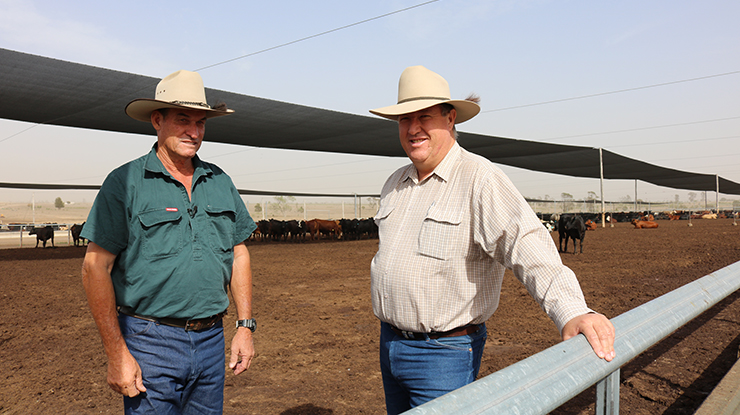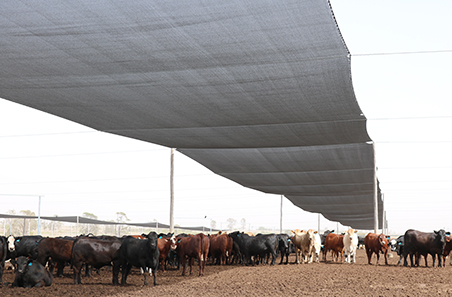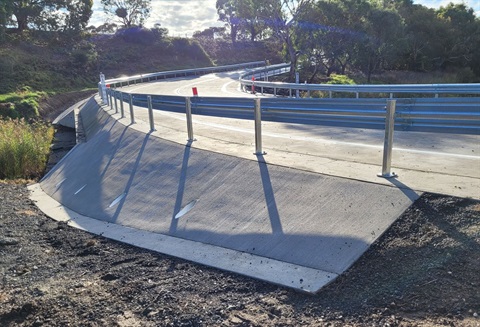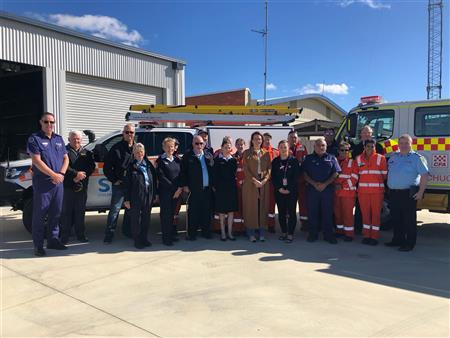 Queensland lot feeder Barry Rich with ALFA-MLA Technical Services Officer Jeff House at Amber Downs Feedlot.
Queensland lot feeder Barry Rich with ALFA-MLA Technical Services Officer Jeff House at Amber Downs Feedlot.
Nine years after an MLA-funded trial explored ‘shade versus no shade’ in feedlots, the animal welfare and productivity benefits continue to outweigh the cost of installation.
In consultation with ALFA, MLA previously conducted R&D on shade design and cattle performance.
ALFA-MLA Technical Services Officer, Jeff House, said an MLA study conducted by Dr John Gaughan from the University of Queensland in 2010 clearly demonstrated the benefits of having shade infrastructure in place.
Key findings
“The trial saw Angus steers on a 120-day feeding period on a dry-rolled, wheat-based finisher diet provided with shade of 3.3m2 per steer, using 80% solar block shade cloth aligned in a north-south orientation,” Jeff said.
“Cattle with access to shade had 3% greater dry matter intake – 36kg extra – and a 1.9% increase in hot carcase weight, which was an extra 6kg/head at the processing plant.”
Applying the findings to today’s market
Jeff has translated the changes in feed intake and carcase weight from Dr Gaughan’s study to the current market conditions for the implanted short-fed export market.
“Based on a $450/tonne diet at $3.05/kg feeder cattle price, and $6.10 forward contract price, feeding cattle under shade over summer results in at least a $20/head* increase in profit,” Jeff said.
“Payback on commercial shade installation is approximately three to four years. Averaged over the life of shade of approximately 15 years, the capital cost of shade is in the range of 1-2ȼ/head/day.”
* This price does not account for any heat-induced mortality or morbidity.

Top tips for installing shade infrastructure
- Seek professional advice from a structural engineer when designing shade structures to suit the type of shade material (shade cloth versus iron) and geographical region.
- North-south orientation of the shade is important – especially with longitudinal design – as this will maximise the amount of shade available throughout the day.
- Provide adequate shade for each animal in the pen – at least 2m2/head should be provided. Most commercial lot feeders utilise shade densities of 3-3.75m2/head.
- It’s important that shade is built at a height to facilitate pen cleaning (at least 5m high for airflow and pen equipment). Design to minimise obstructions when cleaning the pen, maximise air flow and pen drying under the shade.
- If you’re using shade cloth, request a minimum solar rating of 80%, minimum 300 GSM (gram per square metre) and at least a 10-year warranty against UV degradation.
- Apply sufficient tension to shade cloth to prevent damage during windy conditions. Monitor tension regularly, especially after strong winds.
- Support posts used should be graded structural steel with the base encased in concrete to prevent corrosion and damage by pen cleaning machinery. Minimise the number of posts located in the pens.
- Galvanised iron sheets reflect more solar radiation than shade cloth and can be utilised; however, they create engineering challenges due to their weight, and appropriate structures should be built to hold them.
Resources
MLA’s Beef cattle feedlots: design and construction manual contains a chapter on shade, which can be downloaded for free here.
There’s also a range of commercial suppliers that service the feedlot industry that can provide site specific advice, design and quotation.








